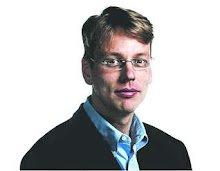Printed in the Iowa City Press-Citizen, Oct. 21, 2009
Our View - Continuing the conversation on public housing
"Is Chicago Creating the Third Ghetto?" That's the provocative title of Andrew Greenlee's presentation scheduled for 7 p.m. today in Room 2520D of the University Capitol Center.
Greenlee, a 2006 graduate of the University of Iowa's Urban and Regional Planning graduate program, will present his research as a Ph.D. candidate in Urban and Regional Planning at the University of Illinois at Chicago.
Not surprisingly for an academic, Greenlee doesn't offer a yes or no answer to his question. Instead, he focuses on how Chicago's housing policies over the past 10 years (after the decision to demolish Cabrini Green and other projects) have created a "ghetto" very different from the "first ghetto" (which formed with the great migration after World War I) and the "second ghetto" (which was the result of post-World War II housing decisions that led to the creation of concentrated, public housing towers).
"It still becomes about low-income communities that are heavily concentrated and segregated by race," Greenlee said Tuesday, "but in this case, the city has been relinquishing its responsibility."
Although the policies of the past decade were meant to create mixed-income neighborhoods, Greenlee explained, there hasn't been enough market-driven interest for middle- and upper-income Chicagoans to move into these traditionally low-income neighborhoods.
The policies also offered housing vouchers as a way to disperse assisted families throughout the marketplace. But many of the families continue to live in the same low-income areas. As a result, the "third ghetto" often includes the same geographic areas as the first and second ghettos.
"So we end up with individuals in both cases who are heavily concentrated in low-income communities that tend to exhibit a lack of access to basic services, grocery stores and public transportation," Greenlee said.
But the "third ghetto" also marks a disapora of low-income Chicagoans who have moved on to the smaller cities surrounding Chicago -- as well as on into Iowa.
Greenlee said there are a lot of misconceptions about the size and make up of this group. The Housing Authority statistics show that public housing recipients and applicants make up only a very small percentage of the people involved in this diaspora. Yet the result has been some explosive politics in the cities in which these Chicagoans settle.
Given the questions about the heavy concentration of public-assisted housing on Iowa City's southeast side -- as well as in pockets throughout our readership area -- we encourage anyone interested in a productive conversation about these issues to attend Greenlee's talk and participate in the question-and-answer session afterward.

No comments:
Post a Comment